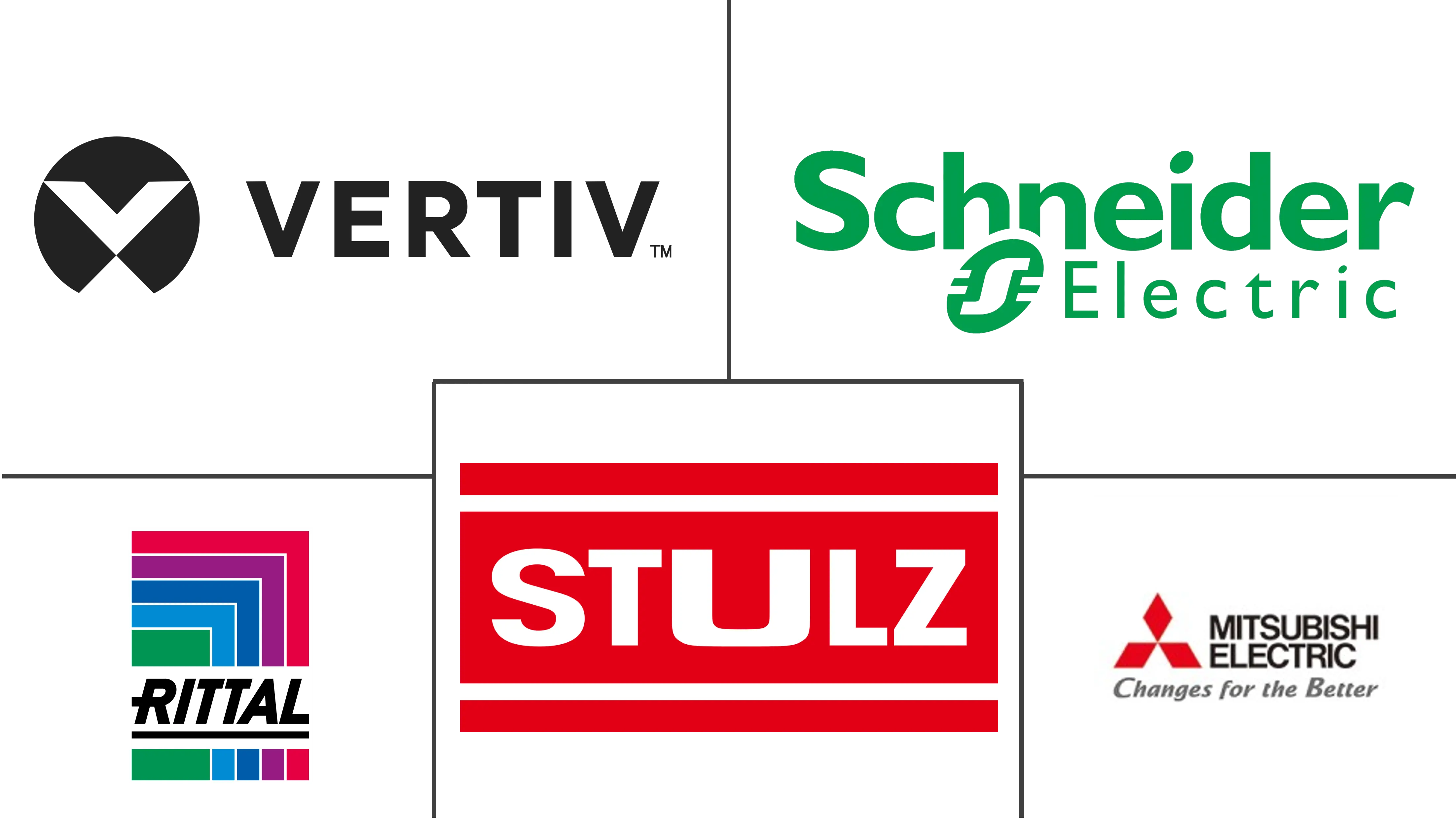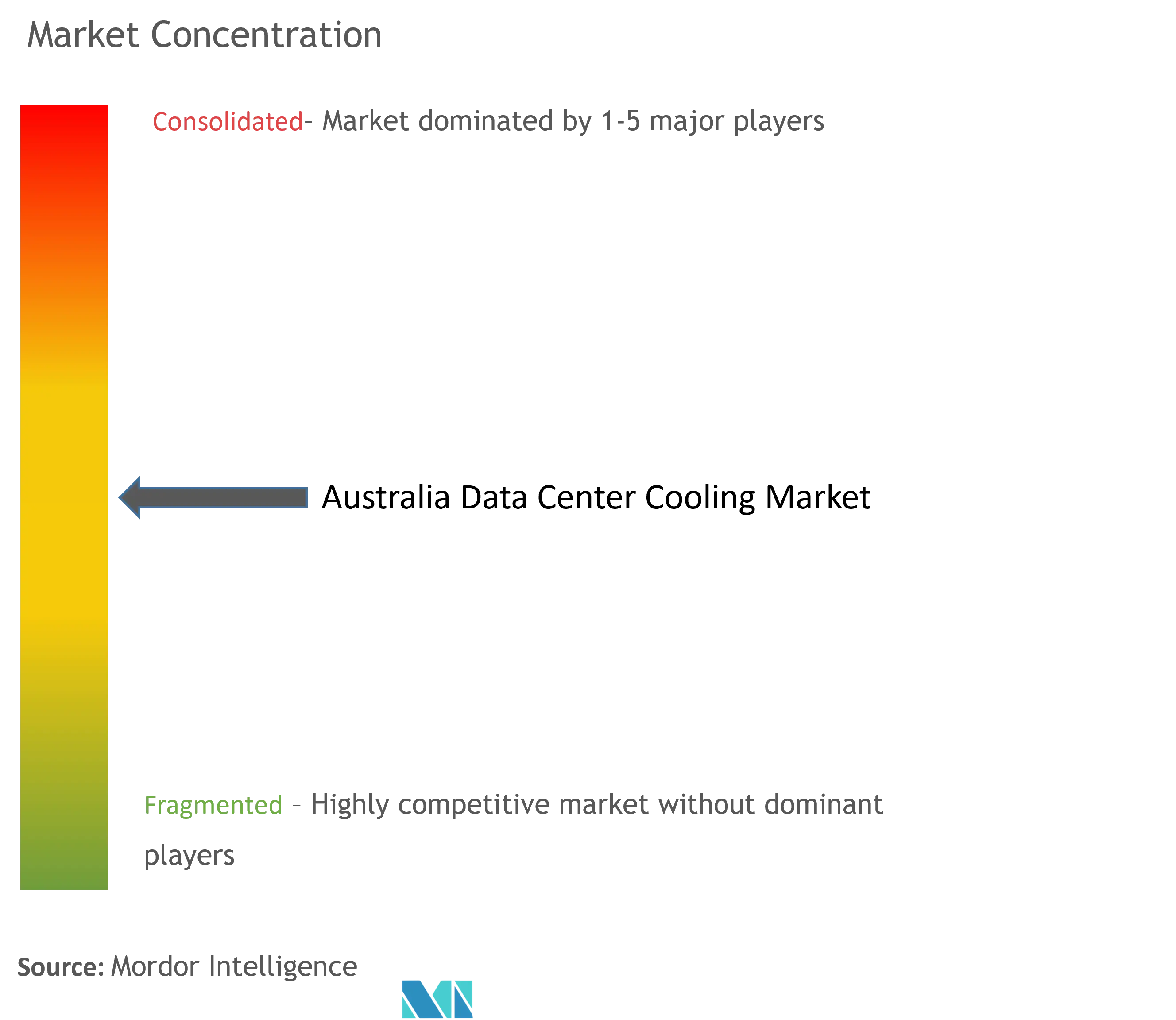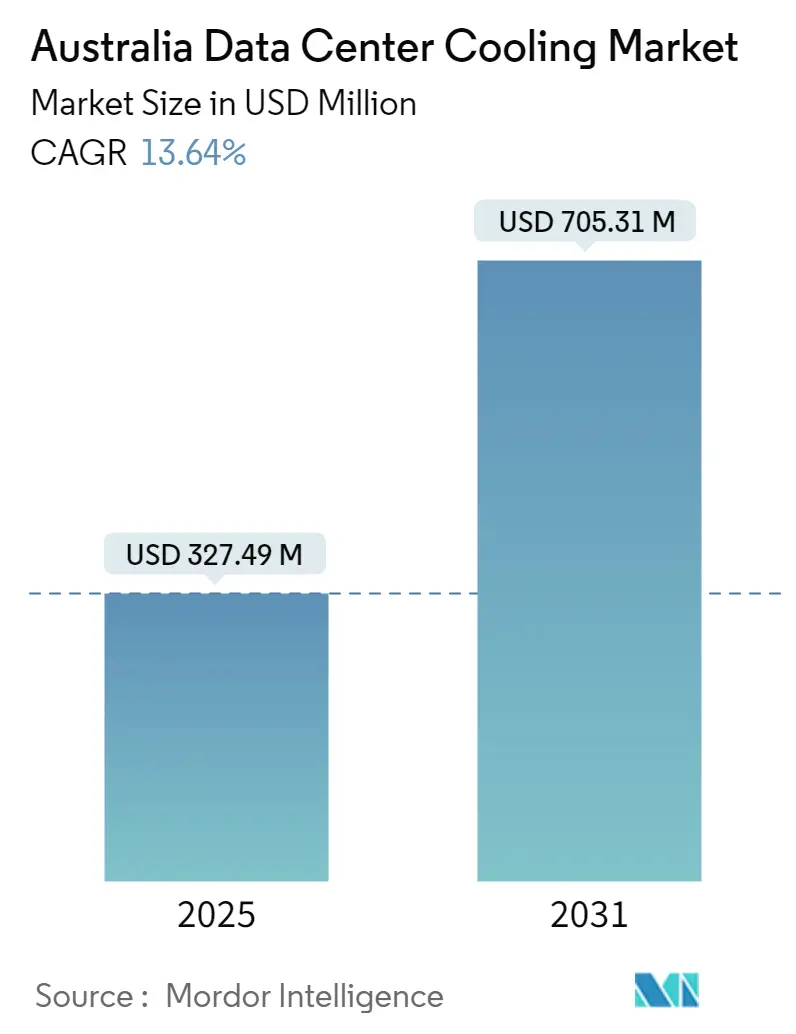
Australia Data Center Cooling Market Analysis
The Australia Data Center Cooling Market size is estimated at USD 327.49 million in 2025, and is expected to reach USD 705.31 million by 2031, at a CAGR of 13.64% during the forecast period (2025-2031).
- The increasing demand for cloud computing among SMEs, government regulations for local data security, and growing investment by domestic players are some of the major factors driving the demand for data centers in the country.
- The upcoming IT load capacity of the Australian data center cooling market is expected to reach more than 2,000 MW by the end of this year. The country's construction of raised floor area is expected to increase above 10 million sq. ft by 2030.
- The country's total number of racks to be installed is expected to reach above 5,70,000 units by 2030. Melbourne, Perth, and Sydney are expected to house the maximum number of racks by 2030. The average annual temperature observed in Australia was between 20 °C to 24 °C. DC cooling is processed in the DC facilities depending on climatic conditions.
- There are close to 23 submarine cable systems connecting Australia, and many are under construction. In May 2024, SubCo enhanced the planned capacity of its upcoming SMAP subsea cable system in Australia. Initially unveiled in 2023, the cable is on track to go live in Q1 2026, linking major Australian cities such as Sydney, Melbourne, Adelaide, and Perth. Additionally, SubCo revealed a boost in the fiber capacity of the 5,000 km cable. Initially conceived as a 12-fiber pair system, SMAP is revamped to a 16-fiber pair configuration, marking a 33% surge in its overall capacity.
Australia Data Center Cooling Market Trends
Liquid-based Cooling is the Fastest Growing Segment in the Market
- Technological advances have made liquid cooling easier to maintain, more scalable, and affordable, reducing data center liquid consumption by more than 15% in tropical climates and 80% in greener areas. The energy used for liquid cooling can be recycled to heat buildings and water, and advanced artificial refrigerants can effectively reduce the carbon footprint of air conditioners.
- In March 2023, GreenSquareDC's WA1 hyperscale data center in Perth, Western Australia, was projected to be Australia's only AI-ready data center capable of meeting the anticipated rapid deployment of LLM (large language model)-based AI, making it the only economical and sustainable option. Designed to be AI-enabled and highly sustainable, GreenSquareDC's 96MW WA1 data center provides "ultimate flexibility" for customers to operate in air-cooled, chip-direct, or immersion-cooled environments.
- Liquid cooling takes advantage of the superior heat transfer properties of water or other liquids to support efficient and cost-effective cooling of high-density racks, up to 3000 times more effective than air. Long proven in mainframe and gaming applications, liquid cooling is increasingly being used to protect rack servers in data centers across the region.
- Furthermore, Australia is the eleventh largest market for e-commerce, with a revenue of USD 31.3 billion in 2021, placing it ahead of Russia and after Canada. With the expansion of e-commerce facilities and the increasing prevalence of digital payments, the market is expected to flourish. In May 2021, Melbourne-based Little Birdie, an e-commerce startup, received an investment of AUD 30 million (USD 21.9 million) from the Commonwealth Bank of Australia in prelaunch funding to integrate its shopping content, including exclusive offers, into its consumer banking app, which reached 11 million retail customers across Australia.
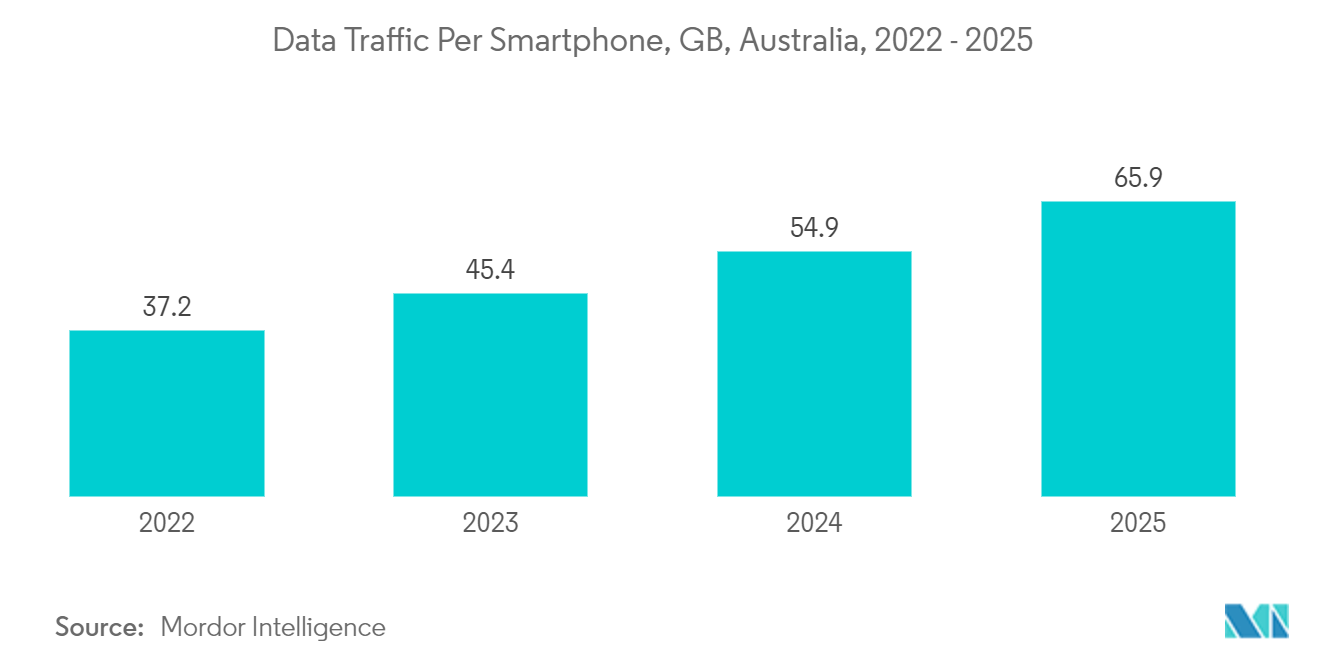
IT and Telecommunication is the Largest Segment in the Market
- The increasing adoption of advanced technologies such as artificial intelligence, cloud computing, big data, and the Internet of Things primarily drives ICT spending in Australian data analytics. These factors aid in the widespread use of AI, automation, and big data in various consumer industries, which is likely to significantly impact the Australian ICT industry during the forecast period.
- In Australia, government initiatives, such as the Australia Government Information Management Office (AGIMO), are leading the way in optimizing data center resources with the introduction of the Australia Government Data Centre Strategy 2010-2025. The strategy represents a transition from using government-run data centers to third-party, multi-tenant data centers.
- The Australian government's ongoing focus on digital transformations in both the public and private sectors is set to propel the ICT industry. This emphasis is expected to boost the adoption rates of technologies like mobility, cloud computing, data analytics, and digital storage in the years ahead, creating significant growth opportunities.
- In a notable move in March 2022, the Australian government allocated USD 44 million to establish AI and digital capability centers. These centers aim to bridge businesses with AI resources, including equipment, tools, services, and expertise. They are designed to enhance the AI proficiency of Australian companies, facilitate SMEs' access to AI resources, promote wider AI technology adoption, offer training and guidance on AI, and bolster the development and commercialization of AI products for both local and global markets.
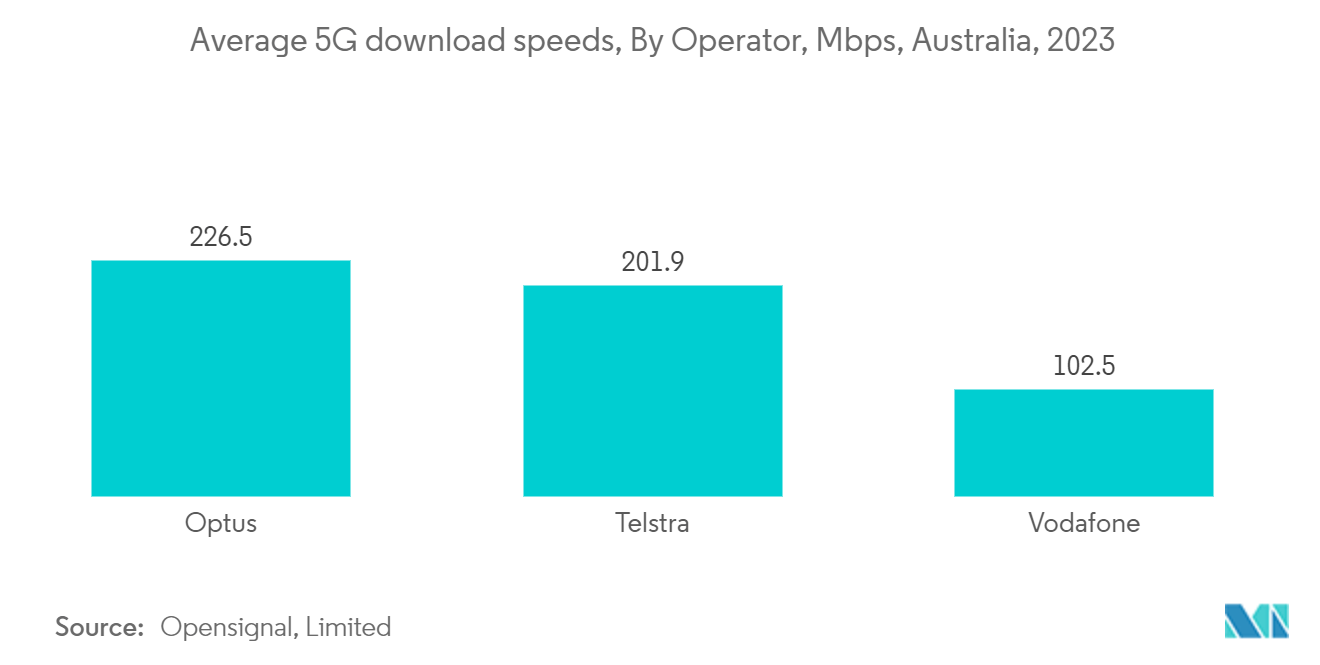
Australia Data Center Cooling Industry Overview
The Australian data center cooling market is moderately competitive and has gained a competitive edge in recent years. Several major players, including Stulz GmbH, Schneider Electric SE, Vertiv Group Corp., Rittal GmbH & Co. KG, and Mitsubishi Electric Hydronics & IT Cooling Systems SpA, dominate the market.
- March 2023: STULZ, a Hamburg-based company specializing in mission-critical air conditioning, announced a significant advancement in its industry-leading CyberAir 3PRO DX series. Some units in this series are compatible with the low-global-warming-potential (GWP) refrigerant R513A. This breakthrough development underscores the company's ongoing commitment to providing the most sustainable air conditioning systems for data centers. Furthermore, STULZ expanded its product portfolio to incorporate R513A refrigerant in more of its offerings, reinforcing its dedication to eco-friendly solutions.
Australia Data Center Cooling Market Leaders
-
Stulz GmbH
-
Schneider Electric SE
-
Vertiv Group Corp.
-
Rittal GmbH & Co. KG
-
Mitsubishi Electric Hydronics & IT Cooling Systems SpA
- *Disclaimer: Major Players sorted in no particular order
Australia Data Center Cooling Market News
- March 2023: Interactive, a managed service provider, unveiled its cutting-edge immersion data center cooling system, designed to enhance high-performance computing (HPC) capabilities for its clientele. In collaboration with digital infrastructure provider Vertiv, Interactive integrated green revolution cooling (GRC) tanks into its solution. These tanks employ a single-phase, non-conductive coolant that is safe for electrical components and boasts a remarkable heat transfer capacity, exceeding that of air by a factor of 1200.
- March 2023: LiquidStack announced a significant investment from HVAC company Trane Technologies to propel immersion cooling technology to new heights. LiquidStack's proprietary liquid immersion cooling technology represents a leap in sustainable data center cooling. These immersion cooling solutions align seamlessly with the company's ambitious sustainability goals, including a commitment to reduce carbon emissions within its customer base by a staggering 1 billion tons by 2030 and the ultimate achievement of net-zero emissions by 2050. This technology also offers substantial benefits to its users, contributing to their sustainability objectives.
Australia Data Center Cooling Industry Segmentation
Data center cooling is a system that helps maintain optimal operating temperatures in data center environments. It is critical, as data center facilities house many computer servers and network equipment that generate heat during operation. Efficient cooling systems are used to dissipate this heat and prevent equipment from overheating, ensuring continued reliable operation of the data center. Methods such as air conditioning, liquid cooling, and hot/cold aisle containment are commonly used to control temperature and humidity in data centers.
The Australian data center cooling market is segmented by technology (air-based cooling [chiller and economizer, CRAH, cooling towers, and other air-based cooling technologies] and liquid-based cooling [immersion cooling, direct-to-chip cooling, and rear-door heat exchanger]), type of data center (hyperscale, enterprise, and colocation), and end-user industry (it and telecom, retail and consumer goods, healthcare, media and entertainment, federal and institutional agencies, and other end-user industries). The report offers market sizes and forecasts in terms of value (USD) for the above segments.
| By Cooling Technology | Air-based Cooling | Chiller and Economizer | |
| CRAH | |||
| Cooling Tower (Covers, Direct, Indirect, and Two-stage Cooling) | |||
| Other Air-based Cooling Technologies | |||
| Liquid-based Cooling | Immersion Cooling | ||
| Direct-to-Chip Cooling | |||
| Rear-Door Heat Exchanger | |||
| By Type | Hyperscale (Owned and Leased) | ||
| Enterprise (On-premise) | |||
| Colocation | |||
| By End-user Industry | IT and Telecom | ||
| Retail and Consumer Goods | |||
| Healthcare | |||
| Media and Entertainment | |||
| Federal and Institutional Agencies | |||
| Other End-user Industries | |||
Australia Data Center Cooling Market Research FAQs
How big is the Australia Data Center Cooling Market?
The Australia Data Center Cooling Market size is expected to reach USD 327.49 million in 2025 and grow at a CAGR of 13.64% to reach USD 705.31 million by 2031.
What is the current Australia Data Center Cooling Market size?
In 2025, the Australia Data Center Cooling Market size is expected to reach USD 327.49 million.
Who are the key players in Australia Data Center Cooling Market?
Stulz GmbH, Schneider Electric SE, Vertiv Group Corp., Rittal GmbH & Co. KG and Mitsubishi Electric Hydronics & IT Cooling Systems SpA are the major companies operating in the Australia Data Center Cooling Market.
What years does this Australia Data Center Cooling Market cover, and what was the market size in 2024?
In 2024, the Australia Data Center Cooling Market size was estimated at USD 282.82 million. The report covers the Australia Data Center Cooling Market historical market size for years: 2019, 2020, 2021, 2022, 2023 and 2024. The report also forecasts the Australia Data Center Cooling Market size for years: 2025, 2026, 2027, 2028, 2029, 2030 and 2031.
Our Best Selling Reports
Australia Data Center Cooling Industry Report
Statistics for the 2025 Australia Data Center Cooling market share, size and revenue growth rate, created by Mordor Intelligence™ Industry Reports. Australia Data Center Cooling analysis includes a market forecast outlook for 2025 to 2031 and historical overview. Get a sample of this industry analysis as a free report PDF download.

